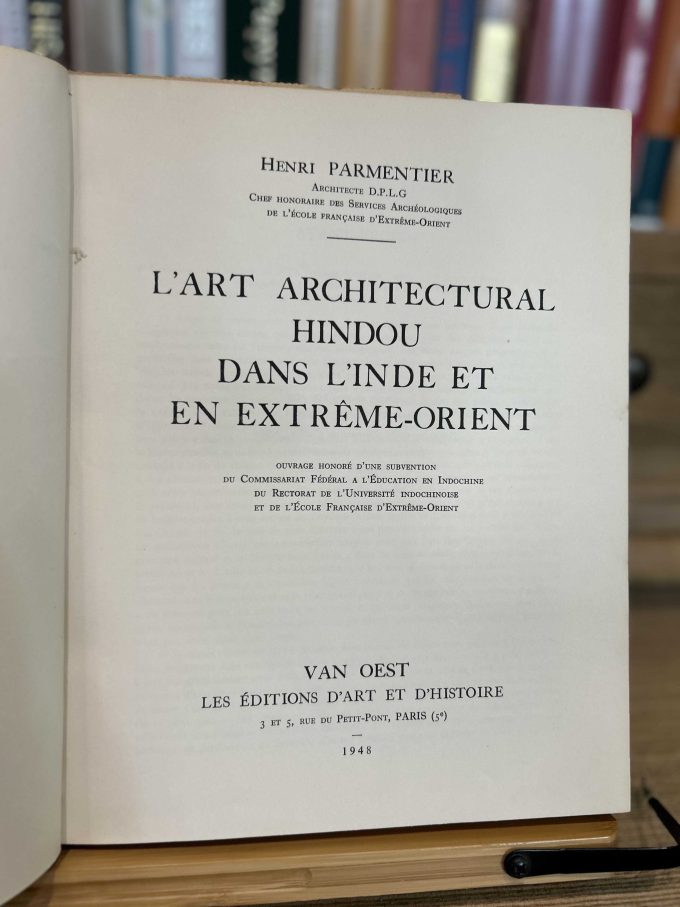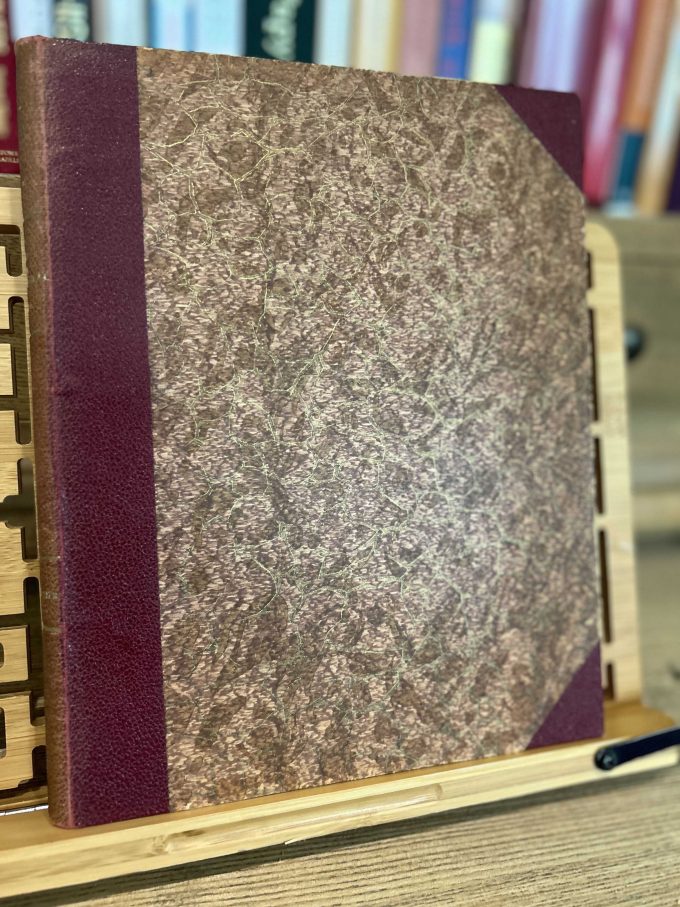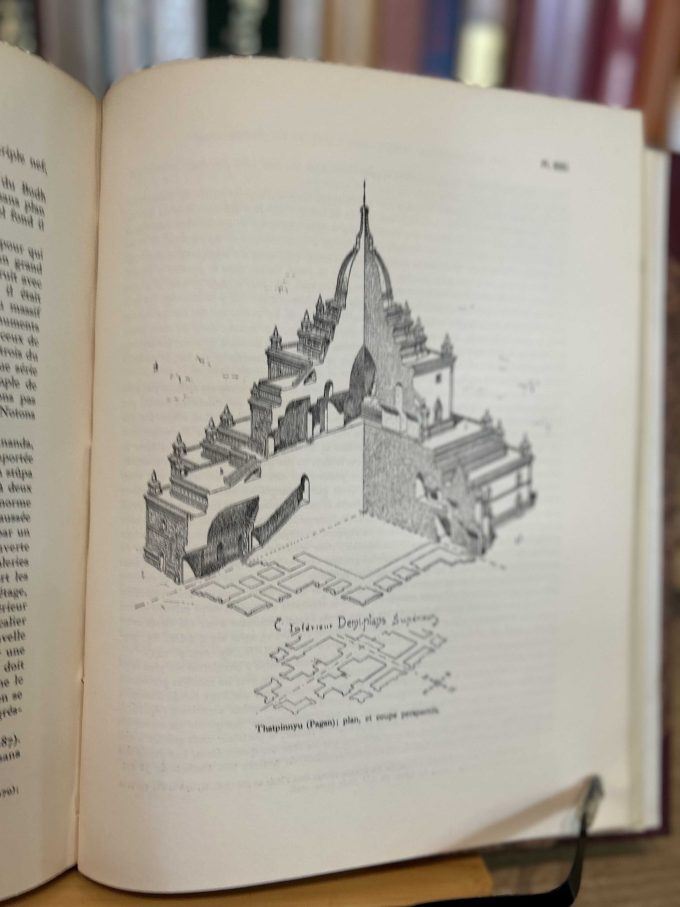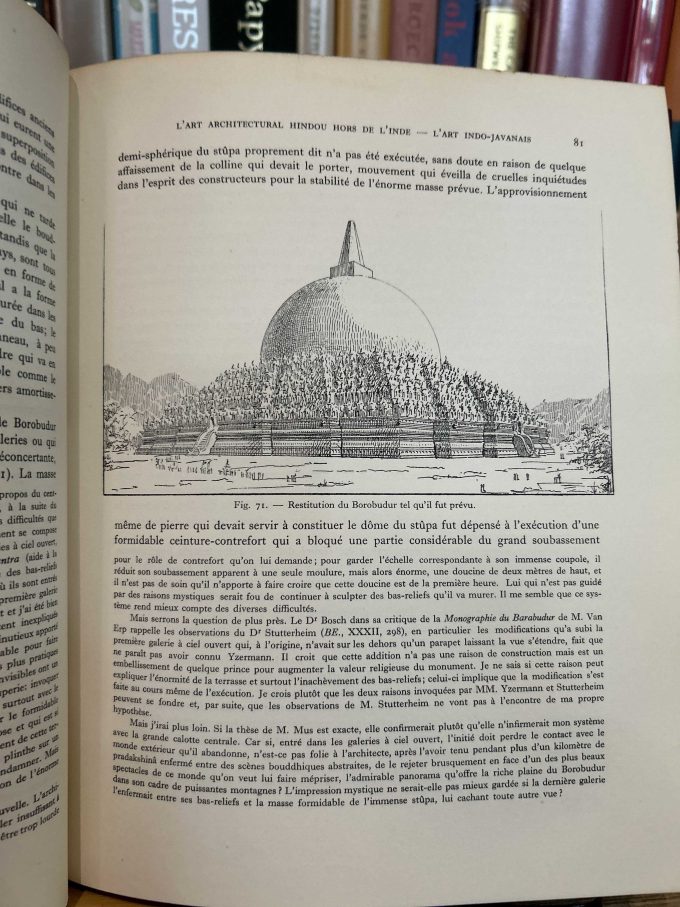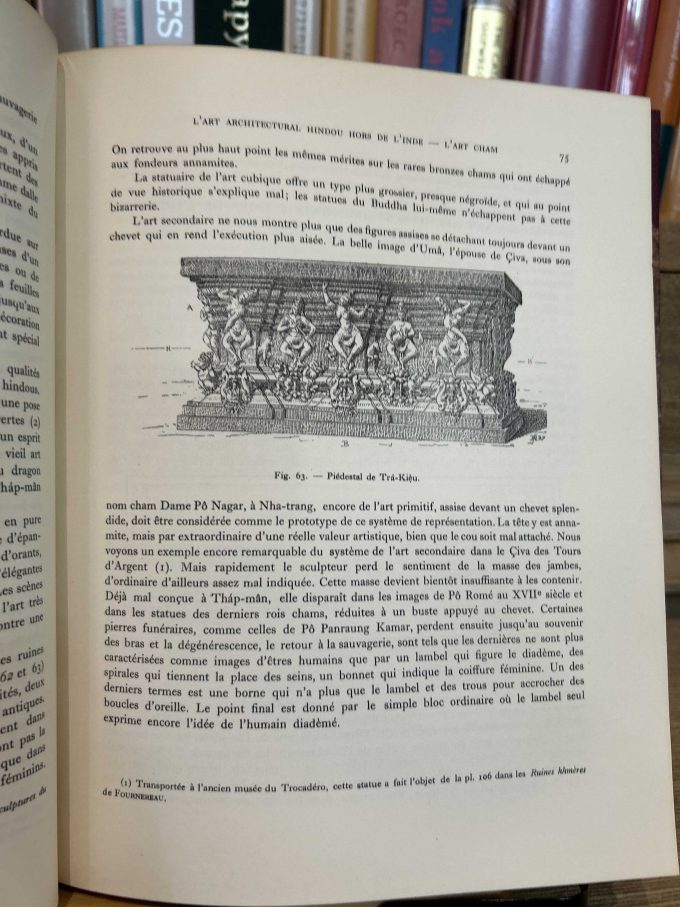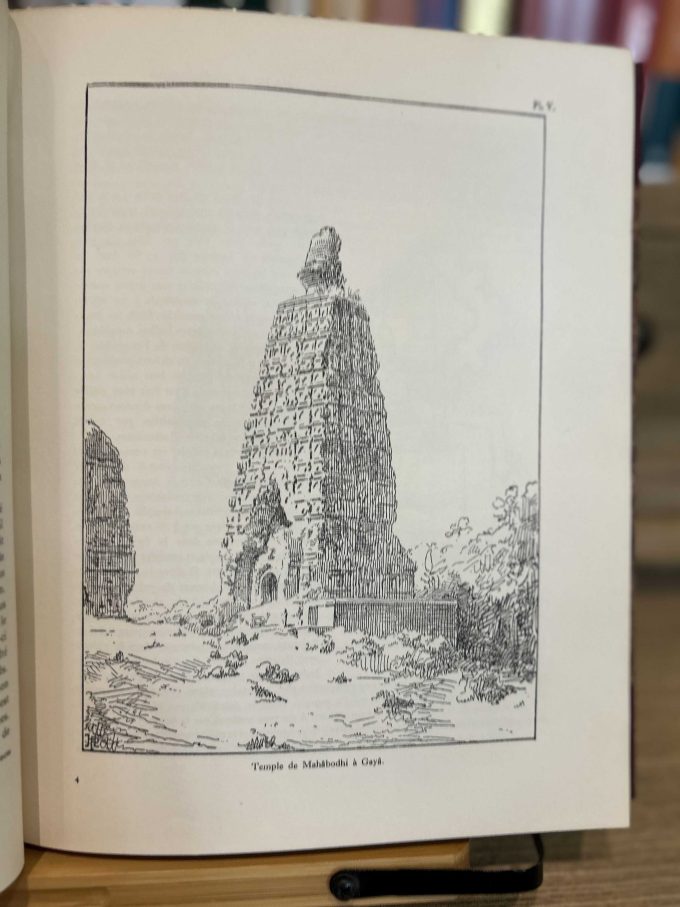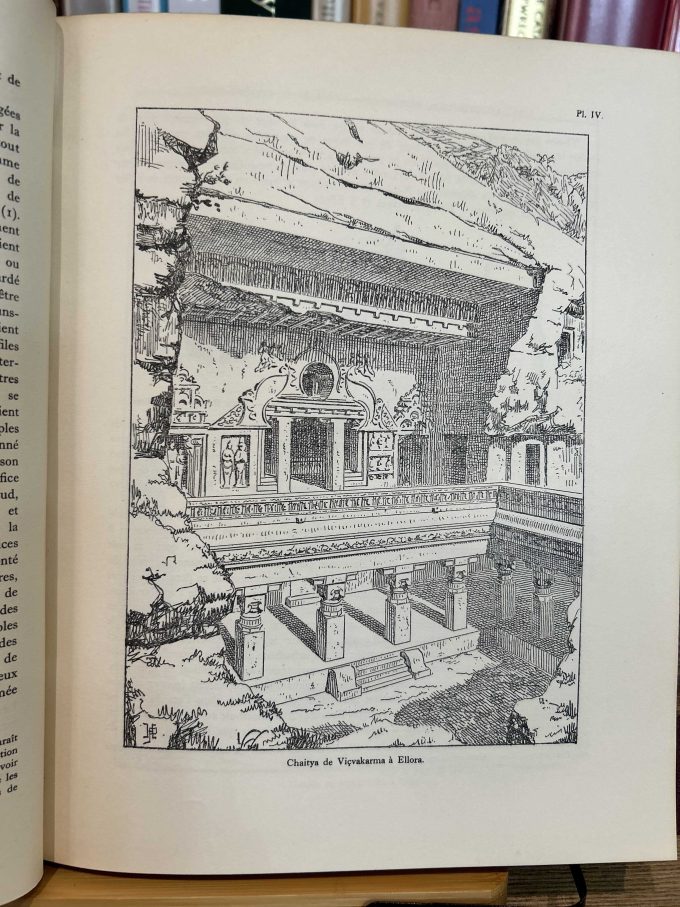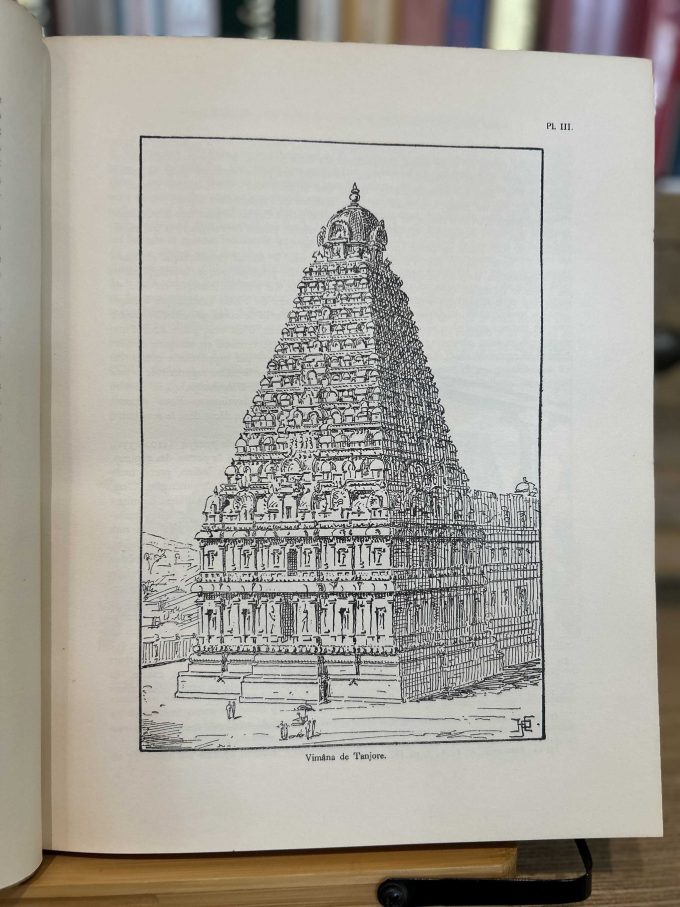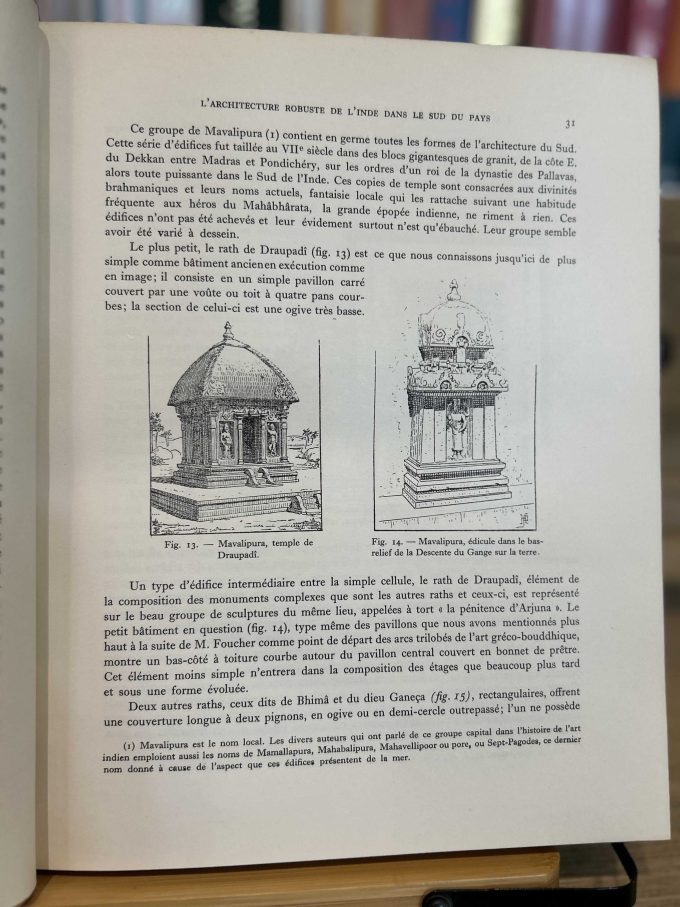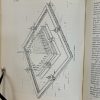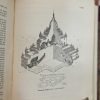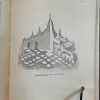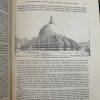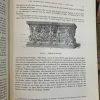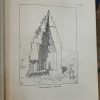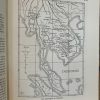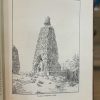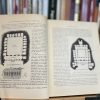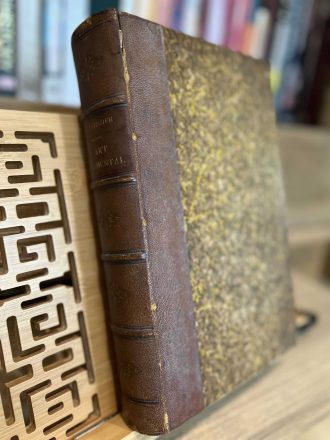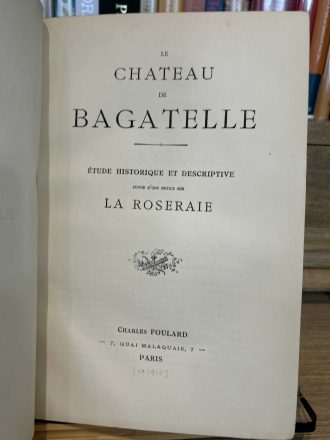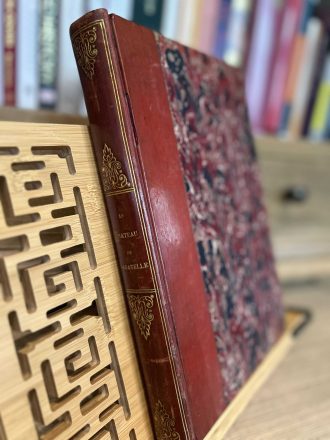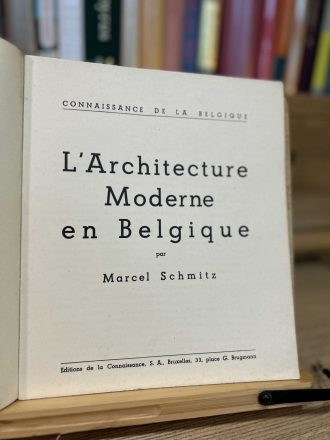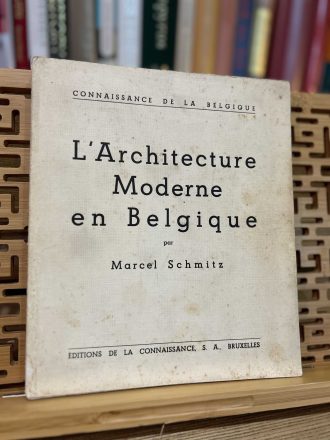Français:
L’art architectural hindou dans l’Inde et en Extrême-Orient par Henri Parmentier est une étude approfondie et richement illustrée de l’architecture hindoue, non seulement en Inde, mais aussi dans d’autres régions de l’Extrême-Orient influencées par cette tradition architecturale. Publié en 1948 dans le cadre de la série Les Éditions d’art et d’histoire, cet ouvrage offre un panorama complet des styles architecturaux hindous, mettant en lumière l’évolution, les caractéristiques distinctives et l’impact de cet art à travers les âges.
Le livre se distingue par ses 94 planches photographiques pleine page, qui présentent 271 figures individuelles, offrant ainsi au lecteur une vision détaillée des structures architecturales décrites. Ces images permettent d’apprécier la finesse des détails et la grandeur des monuments, temples et autres édifices qui incarnent l’art hindou. Parmentier explore non seulement les aspects techniques et esthétiques de ces constructions, mais il replace également ces œuvres dans leur contexte historique, culturel et religieux, soulignant l’interaction entre l’architecture et les croyances spirituelles de l’époque.
L’analyse de Parmentier couvre une vaste période, depuis les premières formes d’architecture hindoue jusqu’aux développements plus récents observés en Asie du Sud-Est. Il examine les divers matériaux utilisés, les techniques de construction, ainsi que les influences mutuelles entre l’Inde et les régions voisines. L’auteur consacre également une attention particulière à la symbolique des éléments architecturaux, révélant comment chaque détail contribue à l’expression du sacré dans ces structures monumentales.
En tant qu’œuvre de référence, L’art architectural hindou dans l’Inde et en Extrême-Orient est particulièrement apprécié pour la rigueur de sa recherche et la qualité de sa documentation. Parmentier, un archéologue et historien d’art respecté, apporte à ce livre non seulement son expertise scientifique, mais aussi une sensibilité artistique qui rend ses descriptions vivantes et accessibles, même pour les non-spécialistes. Cet ouvrage reste une source incontournable pour les étudiants et chercheurs en histoire de l’art, ainsi que pour toute personne intéressée par l’architecture et la culture de l’Inde et de l’Extrême-Orient.
Henri Parmentier (1871-1949) était un éminent archéologue et historien de l’art français, spécialisé dans l’étude des civilisations de l’Asie du Sud-Est et de l’Inde. Né à Paris, Parmentier a été formé à l’École des Beaux-Arts, où il a développé un intérêt profond pour l’architecture et l’archéologie. Il a passé une grande partie de sa carrière en Indochine, où il a joué un rôle crucial dans la découverte, la préservation et l’étude des sites archéologiques de la région.
Parmentier est surtout connu pour ses travaux sur les temples khmers, en particulier ceux d’Angkor, où il a dirigé plusieurs campagnes de fouilles. Ses études sur l’art et l’architecture de l’Asie du Sud-Est lui ont valu une reconnaissance internationale, et il a contribué de manière significative à la compréhension de l’influence hindoue dans cette région. Ses recherches ont été marquées par une approche rigoureuse et une grande attention aux détails, combinant des méthodes archéologiques modernes avec une sensibilité artistique qui transparaît dans ses écrits.
En plus de son travail sur le terrain, Parmentier a publié de nombreux ouvrages et articles académiques, partageant ses découvertes et ses analyses avec la communauté scientifique et le grand public. Ses œuvres sont encore largement utilisées aujourd’hui comme références dans le domaine de l’archéologie et de l’histoire de l’art. Parmentier a également joué un rôle important dans la formation des archéologues locaux, contribuant à l’établissement de pratiques archéologiques durables en Asie du Sud-Est.
L’art architectural hindou dans l’Inde et en Extrême-Orient est l’une de ses œuvres majeures, reflétant son vaste savoir et son engagement à préserver le patrimoine architectural de l’Inde et des régions influencées par la culture hindoue. Son héritage en tant qu’archéologue et historien de l’art continue d’inspirer les générations futures de chercheurs et de passionnés d’art et de culture asiatique.
English:
L’art architectural hindou dans l’Inde et en Extrême-Orient by Henri Parmentier is a comprehensive and richly illustrated study of Hindu architecture, not only in India but also in other regions of the Far East influenced by this architectural tradition. Published in 1948 as part of the Les Éditions d’art et d’histoire series, this work offers a thorough overview of Hindu architectural styles, highlighting the evolution, distinctive characteristics, and impact of this art across the ages.
The book stands out for its 94 full-page photographic plates, featuring 271 individual figures, providing readers with a detailed view of the architectural structures described. These images allow for an appreciation of the intricate details and grandeur of the monuments, temples, and other structures that embody Hindu art. Parmentier explores not only the technical and aesthetic aspects of these constructions but also places these works within their historical, cultural, and religious contexts, emphasizing the interaction between architecture and the spiritual beliefs of the time.
Parmentier’s analysis spans a wide period, from the earliest forms of Hindu architecture to the more recent developments observed in Southeast Asia. He examines the various materials used, construction techniques, and the mutual influences between India and neighboring regions. The author also pays particular attention to the symbolism of architectural elements, revealing how each detail contributes to the expression of the sacred in these monumental structures.
As a reference work, L’art architectural hindou dans l’Inde et en Extrême-Orient is highly regarded for the rigor of its research and the quality of its documentation. Parmentier, a respected archaeologist and art historian, brings to this book not only his scientific expertise but also an artistic sensitivity that makes his descriptions vivid and accessible, even to non-specialists. This work remains an essential resource for students and researchers in art history, as well as for anyone interested in the architecture and culture of India and the Far East.
Henri Parmentier (1871-1949) was a prominent French archaeologist and art historian specializing in the study of the civilizations of Southeast Asia and India. Born in Paris, Parmentier was trained at the École des Beaux-Arts, where he developed a deep interest in architecture and archaeology. He spent much of his career in Indochina, where he played a crucial role in the discovery, preservation, and study of the region’s archaeological sites.
Parmentier is best known for his work on Khmer temples, particularly those at Angkor, where he led several excavation campaigns. His studies on the art and architecture of Southeast Asia earned him international recognition, and he significantly contributed to the understanding of Hindu influence in this region. His research was marked by a rigorous approach and a keen attention to detail, combining modern archaeological methods with an artistic sensibility that is evident in his writings.
In addition to his fieldwork, Parmentier published numerous books and academic articles, sharing his discoveries and analyses with the scientific community and the general public. His works are still widely used today as references in the fields of archaeology and art history. Parmentier also played an important role in training local archaeologists, contributing to the establishment of sustainable archaeological practices in Southeast Asia.
L’art architectural hindou dans l’Inde et en Extrême-Orient is one of his major works, reflecting his extensive knowledge and commitment to preserving the architectural heritage of India and regions influenced by Hindu culture. His legacy as an archaeologist and art historian continues to inspire future generations of researchers and enthusiasts of Asian art and culture.
Nederlands:
L’art architectural hindou dans l’Inde et en Extrême-Orient van Henri Parmentier is een diepgaande en rijk geïllustreerde studie van de hindoeïstische architectuur, niet alleen in India, maar ook in andere regio’s van het Verre Oosten die door deze architectonische traditie zijn beïnvloed. Gepubliceerd in 1948 als onderdeel van de serie Les Éditions d’art et d’histoire, biedt dit werk een volledig overzicht van de hindoeïstische bouwstijlen, waarbij de evolutie, de karakteristieke kenmerken en de impact van deze kunst door de eeuwen heen worden belicht.
Het boek valt op door zijn 94 paginagrote fotografische platen, die 271 afzonderlijke figuren presenteren, waardoor de lezer een gedetailleerd beeld krijgt van de beschreven architectonische structuren. Deze beelden stellen ons in staat de verfijning van details en de grootsheid van de monumenten, tempels en andere bouwwerken die de hindoeïstische kunst belichamen, te waarderen. Parmentier onderzoekt niet alleen de technische en esthetische aspecten van deze constructies, maar plaatst deze werken ook in hun historische, culturele en religieuze context, waarbij hij de interactie tussen architectuur en de spirituele overtuigingen van die tijd benadrukt.
Parmentier’s analyse beslaat een lange periode, van de eerste vormen van hindoeïstische architectuur tot de meer recente ontwikkelingen in Zuidoost-Azië. Hij onderzoekt de verschillende gebruikte materialen, de bouwtechnieken en de wederzijdse invloeden tussen India en de aangrenzende regio’s. De auteur besteedt ook bijzondere aandacht aan de symboliek van architectonische elementen en onthult hoe elk detail bijdraagt aan de uitdrukking van het heilige in deze monumentale structuren.
Als referentiewerk wordt L’art architectural hindou dans l’Inde et en Extrême-Orient bijzonder gewaardeerd vanwege de grondigheid van het onderzoek en de kwaliteit van de documentatie. Parmentier, een gerespecteerde archeoloog en kunsthistoricus, brengt in dit boek niet alleen zijn wetenschappelijke expertise naar voren, maar ook een artistieke gevoeligheid die zijn beschrijvingen levendig en toegankelijk maakt, zelfs voor niet-specialisten. Dit werk blijft een onmisbare bron voor studenten en onderzoekers in de kunstgeschiedenis, evenals voor iedereen die geïnteresseerd is in de architectuur en cultuur van India en het Verre Oosten.
Henri Parmentier (1871-1949) was een vooraanstaand Frans archeoloog en kunsthistoricus, gespecialiseerd in de studie van de beschavingen van Zuidoost-Azië en India. Geboren in Parijs, werd Parmentier opgeleid aan de École des Beaux-Arts, waar hij een diepe interesse ontwikkelde voor architectuur en archeologie. Hij bracht een groot deel van zijn carrière door in Indochina, waar hij een cruciale rol speelde bij de ontdekking, het behoud en de studie van archeologische vindplaatsen in de regio.
Parmentier is vooral bekend om zijn werk aan de Khmer-tempels, met name die van Angkor, waar hij verschillende opgravingscampagnes leidde. Zijn studies over de kunst en architectuur van Zuidoost-Azië leverden hem internationale erkenning op, en hij droeg aanzienlijk bij aan het begrip van de hindoeïstische invloed in deze regio. Zijn onderzoek werd gekenmerkt door een rigoureuze aanpak en een grote aandacht voor details, waarbij hij moderne archeologische methoden combineerde met een artistieke gevoeligheid die tot uiting komt in zijn geschriften.
Naast zijn werk in het veld heeft Parmentier tal van boeken en wetenschappelijke artikelen gepubliceerd, waarin hij zijn ontdekkingen en analyses deelde met de wetenschappelijke gemeenschap en het grote publiek. Zijn werken worden vandaag de dag nog steeds veel gebruikt als referenties in het domein van de archeologie en kunstgeschiedenis. Parmentier speelde ook een belangrijke rol bij de opleiding van lokale archeologen, wat bijdroeg aan de oprichting van duurzame archeologische praktijken in Zuidoost-Azië.
L’art architectural hindou dans l’Inde et en Extrême-Orient is een van zijn belangrijkste werken, dat zijn uitgebreide kennis en zijn inzet voor het behoud van het architectonische erfgoed van India en de door de hindoeïstische cultuur beïnvloede regio’s weerspiegelt. Zijn nalatenschap als archeoloog en kunsthistoricus blijft toekomstige generaties onderzoekers en liefhebbers van Aziatische kunst en cultuur inspireren.
